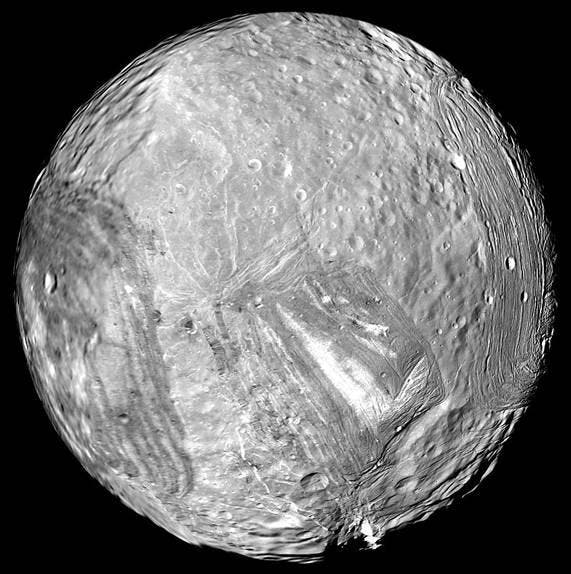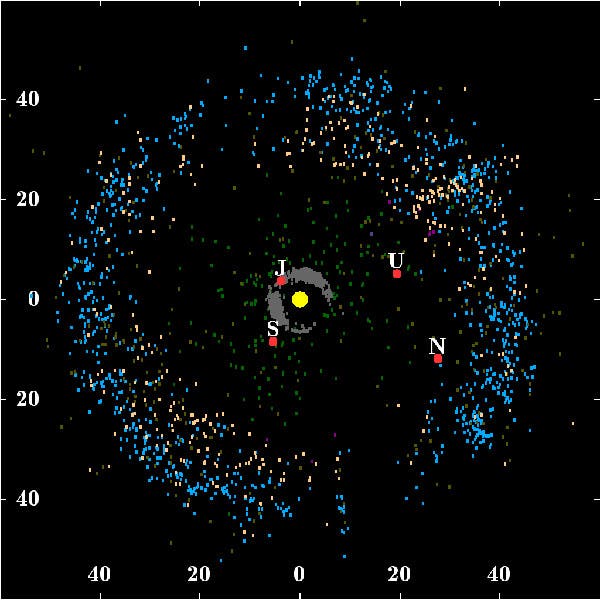Scientist of the Day - Gerard Kuiper
Gerard Peter Kuiper, a Dutch/American astronomer, was born Dec. 7, 1905. In 1948, Kuiper discovered a fifth moon orbiting the planet Uranus. He named the moon Miranda, and the reasons why are interesting. William Herschel had discovered the planet Uranus in 1781. Six years later, he discovered two Uranian moons, which he called Uranus I and II. For fifty years, no one else could see them, because Herschel had the best telescopes in the world. In the 1840s, telescopes that rivaled Herschel’s were constructed, and using one of these, William Lassell discovered two more moons, which he called Uranus I and II, bumping Herschel's up to III and IV. Because of the numbering confusion, Herschel's son John, himself a noted astronomer, in 1852 decided to give names to the moons. He chose Titania and Oberon for Herschel's moons, and Ariel and Umbriel for Lassell's discoveries. The names were chosen because they are the names of fairies or sprites in the works of Shakespeare or Alexander Pope. The reason for the younger Herschel's decision to name planetary moons after Shakespearean sprites is not known. But when Kuiper discovered the fifth (and last round) moon of Uranus, he stuck to the pattern, sort of. Miranda is not a sprite, but she is a character in Shakespeare’s The Tempest, and she did get set up for love by Prospero’s sprite, Ariel. And now she has a place in the sky. The photo of Miranda, taken by Voyager 2 in 1986, shows an icy world that indeed looks tempestuous, with a complex geology that is not well understood (second image).
Kuiper is better known for the fact that his name is attached to a large region of the solar system – the Kuiper belt, which lies out beyond Neptune (see diagram, third image). Kuiper was one of many astronomers who suggested between 1930 and 1960 that there ought to be a whole slew of small bodies out in Pluto's part of the solar system, material left over from the formation of the solar system. When the first such objects were discovered, in 1992, the region was named after Kuiper, and any object in it, including Pluto, can be referred to as a KBO (Kuiper belt object). There are now well over a thousand objects known to occupy this belt, and probably there are hundreds of thousands. A few of the larger ones are: Charon, Makemake, Haumea (all moons of Pluto), plus Ixion and Varuna. There are some other objects out beyond Neptune that are NOT in the Kuiper Belt, but further out, in a region called the scattered disc; these would include Sedna and Eris, both of which are quite large; Eris is nearly the size of Pluto. Since these cannot be KBOs, they are called TNOs – trans-Neptunian objects. Crossword puzzle constructors were grateful to have a few more acronyms to use for awkward areas in their puzzles.
Kuiper also compiled the last great photographic lunar atlas based on images taken from Earth. Published in 1960, it was called, simply and appropriately, Photographic Lunar Atlas. Kuiper chose the best photos available from five different observatories, and added a few new ones as necessary. We have a copy in the Library, and we included a plate from this large atlas in our Face of the Moon exhibition. In this same year (1960), Kuiper helped found the Lunar and Planetary Laboratory at the University of Arizona, which he directed until his death in 1973. Dr. William B. Ashworth, Jr., Consultant for the History of Science, Linda Hall Library and Associate Professor emeritus, Department of History, University of Missouri-Kansas City. Comments or corrections are welcome; please direct to ashworthw@umkc.edu.








![Using an astrolabe to measure the depth of a well, woodcut in Elucidatio fabricae vsusq[ue] astrolabii, by Johannes Stöffler, 1513 (Linda Hall Library)](https://assets-us-01.kc-usercontent.com:443/9dd25524-761a-000d-d79f-86a5086d4774/a998eb50-55d2-4a88-ace2-a50aa5fa86e7/Stoffler%201.jpg?w=210&h=210&auto=format&fit=crop)